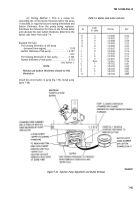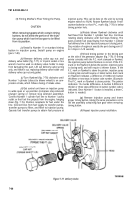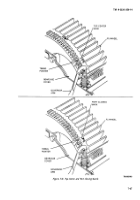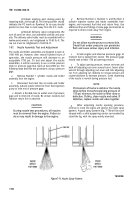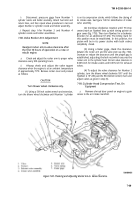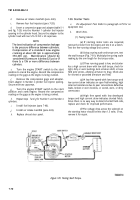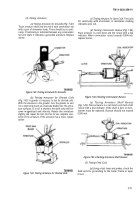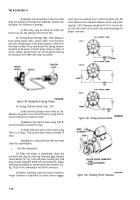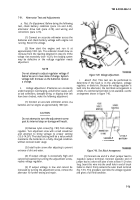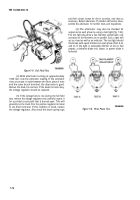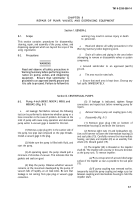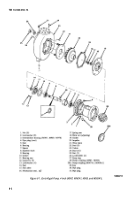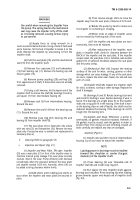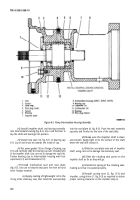TM-9-2330-356-14
SEMITRAILER, TANK: 5000 GALLON, BULK HAUL, SELF LOAD/UNLOAD M967 AND M967A1; SEMITRAILER, TANK: 5000 GALLON, FUEL DISPENSING, AUTOMOTIVE M969 AND M969A1; SEMITRAILER, TANK: 5000 GALLON, FUEL DISPENSING, UNDER/OVERWING AIRCRAFT M970 AND M970A1
TECHNICAL MANUAL; OPERATOR’S, UNIT, DIRECT SUPPORT, AND GENERAL SUPPORT MAINTENANCE MANUAL
OCTOBER 1990
TM-9-2330-356-14 - Page 427 of 528
TM 9-2330-356-14
(2)
Testing Armature.
(c) Testing Amature for Open Coils.
Test coils
for continuity with ohmmeter. A resistance reading
(a) Testing Armature for Grounds (Fig. 7-82).
indicates open coil.
Touch armature shaft and the end of each commutator bar
with a pair of ohmmeter leads. There should be no conti-
(d) Tessting Commutator Runout (Fig. 7-84).
nuity. If continuity is indicated between any commutator
Place armature in a test bench and test runout with a dial
bar and shaft, it indicates a grounded armature. Replace
indicator. When commutator runout exceeds 0.004-inch,
starter.
replace starter.
Figure 7-82. Testing Armature for Grounds.
(b) Testing Armature for Shorted Coils
(Fig. 7-83).
A growler is necessary to test for shorted coils.
With the armature in the growler, turn the growler on and
run a steel strip (such as a hacksaw blade) over the arma-
ture surfaces. If a coil is shorted, the steel strip will be-
come magnetized and vibrate. Rotate the armature
slightly and repeat the test. Do this for one complete revo-
lution of the armature. If the armature has a short, replace
starter.
Figure 7-84. Checking Commutator Runout.
(e) Testing Armature Shafl Runout
(Fig. 7-85).
Place armature in a test bench and check shaft
runout with a dial indicator. If the shaft is bent or worn,
starter must be replaced. Runout should not exceed
0.006-inch.
Figure 7-85. Checking Armature Shaft Runout.
(3) Testing Field Coils.
(a)
Using a test lamp and probes, check the
field coils for grounding to the motor frame or open
Figure 7-83. Testing Armature for Shorted Coils.
circuit.
7-71
Back to Top





